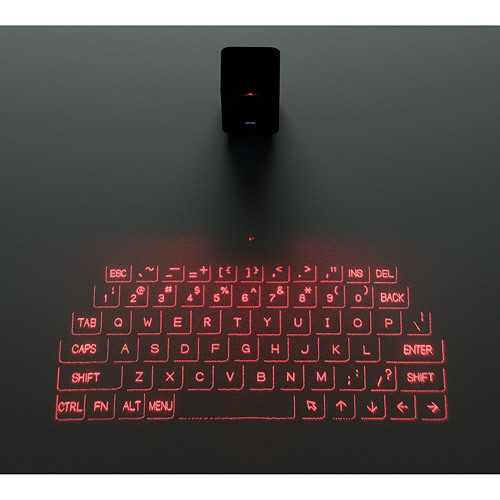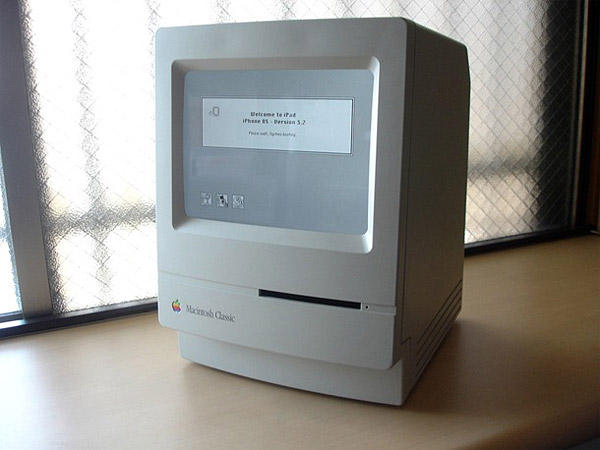Sometimes the integrated Keyboard on laptop or the external keyboard attached to desktop may refuse to type numbers. You will find below the steps to fix the issue of Keyboard not typing numbers in Windows 10.
- Apple Wireless Keyboard Not Typing
- Logitech Wireless Keyboard Not Typing
- Wireless Keyboard Not Typing Correctly
- Apple Wireless Keyboard Not Typing Keyboard Software
- Apple Wireless Keyboard Not Typing Correct Letters
Keyboard Not typing Numbers in Windows 10
One of the most common sources of malfunction for any wireless device is a weak power source. As a wireless keyboard drains its batteries, it becomes less able to maintain the radio link with its. The short answer is: not you. The longer answer is an authorized Apple dealer will fix your MacBook Pro keyboard for free. In some rare cases a blast of compressed air could clear the dust from the keyboard. Even though it won't do the job for most, it's worth trying since a can of air only costs a few dollars.
A typical full sized keyboard will have a dedicated number pad in addition to the number keys located above the letter keys.
Depending on the case, you may face the issue of only the number pad keys not working or both number pad and number keys not working on your computer.
Another problem noticed on compact or mini keyboards is that of Keyboard typing numbers only, instead of typing both letters and numbers.
The reason for this issue in bother regular and compact keyboard ranges from the simple case of Number Pad being accidentally switched OFF to other reasons like the keyboard drivers being outdated/corrupted.
1. Enable Numlock on the Keyboard
The most common reason for laptop keyboard not typing numbers is due to the Num Lock key being accidentally disabled.
Depending on the Keyboard, you may find a small LED indicator on the keyboard to indicate whether the Number Lock is enabled or not.
If you are unable to type numbers, simply press the Num Lock key once to enable the Number pad. New apple computer mouse. You will see the LED light glowing, indicating that the Number Pad is now working.
If there is no LED on the keyboard, you should be able to see a message on the screen, confirming that the number pad has been activated.
2. Turn OFF Mouse Keys
Another reason for Keyboard not typing numbers in Windows 10 is due to the mouse keys being switched ON.
1. Open Settings > click on Ease of Access tab.
2. On the next screen, scroll down and click on Mouse in the left pane. In the right-pane, disable Turn on Mouse Keys to use numeric keypad option.
Now, see if you are able to type numbers on your computer.
3. Run Keyboard Troubleshooter
Windows 10 comes with an in-built keyboard troubleshooter that can help you find and fix problems with the keyboard on your computer
1. Open Settings > click on Updates and Security.
2. On the next screen, click on Troubleshoot in the left pane. In the right-pane, click on Keyboard and then click on Run the Troubleshooter.
3. Wait for the Troubleshooter to find and fix Keyboard related problems on your computer.
Apple Wireless Keyboard Not Typing
4. Update Keyboard Drivers
The reason for keyboard not typing numbers could also be due to outdated or corrupted keyboard drivers on your computer
1. Right-click on the Start button and click on Device Manager.
2. On the Device Manager screen, expand Keyboards entry > right-click on the problematic Keyboard and select Update driver option in the contextual menu.
3. On the next screen, click on Search Automatically for updated driver software option.
Restart your computer and see if the keyboard is now typing numbers.
5. Disable Filter Keys
The Filter Keys setting in Windows 10 can sometimes cause problems with certain Keyboards.
1. Open Settings on your computer and click on Ease of Access.
2. On the next screen, select Keyboard in the left pane and Turn OFF Filter Keys option.
Restart your computer and see if the USB Keyboard is now working
6. Use Different User Account
If the none of the above methods worked, sign-in using another User Account and see if the keyboard types numbers.
If the keyboard works normally from another user account, the problem is most likely due to your user account being corrupted.
In this case, you can either create a New User Account or try to repair your corrupted User account.
7. Use External Keyboard
Connect an external keyboard to your laptop and see if you can type numbers.
If the external keyboard works, the problem is most likely hardware related and you should consider getting the keyboard examined by a technician.
Your device isn't recognized by your Mac
Follow these steps if your mouse, keyboard, or trackpad isn't recognized by your Mac.
Make sure that your wireless mouse, keyboard, or trackpad is turned on
The Magic Mouse and Magic Mouse 2 have a slide switch on the bottom of the device. Slide the switch to turn on the device. On the Magic Mouse, the green LED briefly lights up. On the Magic Mouse 2, green coloring is visible beneath the switch.
The Magic Keyboard, Magic Keyboard with Numeric Keypad, and Magic Trackpad 2 have a slide switch on the back edge of the device. Slide the switch to turn on the device (green coloring becomes visible). Earlier Apple Wireless Keyboard models have a power button on the right side of the device. Press the button and you see a green LED on the top of the device, near the button.
When you turn these devices on, they appear as connected in Bluetooth preferences and in the Bluetooth menu in your menu bar. If a device doesn't appear there, make sure it's charged or replace it batteries, and make sure it's been paired with your Mac.
Make sure that your device has been set up to work with your Mac
Learn how to pair your Magic Mouse 2, Magic Keyboard, Magic Keyboard with Numeric Keypad, Magic Trackpad 2 and earlier models of Apple wireless devices with your Mac.
Make sure that Bluetooth is turned on
Use your Mac notebook's built-in trackpad or a USB mouse to choose Apple menu > System Preferences, then click Bluetooth. Make sure that Bluetooth is turned on.
Refer to the table below for more information on determining the Bluetooth status. If the Bluetooth icon doesn't appear, or if the menu bar status continues to indicate that Bluetooth is off, restart your computer and then try to turn Bluetooth on again.
| Bluetooth menu icon | Bluetooth status |
|---|---|
| Bluetooth is on, but no wireless devices are connected to the Mac. See the Make sure that your wireless mouse, keyboard, or trackpad is turned on section of this article. | |
| Bluetooth is on and at least one wireless device is connected. | |
| When this icon flashes, at least one wireless device has a low battery. Click the Bluetooth icon to identify the affected device, then recharge the device or replace its batteries. | |
| Bluetooth is off. Click the Bluetooth icon using a USB mouse or built-in trackpad and select Turn Bluetooth On. | |
| Bluetooth is offline or unavailable. Restart your Mac. If the Bluetooth status doesn't change, disconnect all USB devices and restart your Mac again. |
Make sure that your devices are charged
Magic Mouse 2, Magic Keyboard, Magic Keyboard with Numeric Keypad, and Magic Trackpad 2 have built-in rechargeable batteries. You can charge these devices by connecting them to a Mac or a USB power adapter using a Lightning to USB Cable. For the fastest battery charging performance, be sure your device is switched on when connected to the Lightning to USB Cable.
To check the battery level of these devices, click the Bluetooth icon in your Mac's menu bar, then select your device by name. If the battery level of any device is low, recharge the device. If the device isn't showing, make sure the device is turned using the steps outlined above.
Turn the device off and on
If your Apple wireless mouse, keyboard, or trackpad isn't recognized by your Mac after following the tips above, try turning the wireless device off, waiting a few seconds, and then turning it back on.
Logitech Wireless Keyboard Not Typing
Your mouse or keyboard intermittently stops responding
- Click the mouse or trackpad or press a key on the keyboard to reconnect the device to the computer. It might take a moment for the device to respond.
- Check for wireless interference.
Your mouse doesn't scroll up or down or side to side

If you can't use your mouse to scroll through a web page or document, make sure that you're using the correct Multi-Touch gestures and have set up your scrolling speed preferences correctly.

If you can't use your mouse to scroll through a web page or document, make sure that you're using the correct Multi-Touch gestures and have set up your scrolling speed preferences correctly.
Wireless Keyboard Not Typing Correctly
Your mouse or trackpad doesn't track as expected
Apple Wireless Keyboard Not Typing Keyboard Software
Apple Wireless Mouse, Magic Mouse, and Magic Mouse 2 can be used on most smooth surfaces. If tracking issues occur, try these options:
- Choose Apple menu > System Preferences, then click Mouse. Set the 'Tracking speed' slider to adjust how fast the pointer moves as you move the mouse.
- Try using a different surface to see if tracking improves.
- Turn the mouse over and inspect the sensor window. Use compressed air to gently clean the sensor window if dust or debris is present.
- If multiple Bluetooth wireless devices are in use nearby, try turning them off one at a time to see if the issue improves.
Apple Wireless Keyboard Not Typing Correct Letters
Learn more what to do if your trackpad isn't tracking correctly.
Your keyboard has one or more keys that don't respond
Use the Keyboard Viewer to test whether the keyboard keys are responding correctly when they are pressed.
- Choose Apple menu > System Preferences, then click Keyboard.
- Click the Input Sources tab.
- Make sure that the keyboard language that you use is listed on the left side. If it's not, click the add button (+) and choose from the languages that appear.
- Select the 'Show Input menu in menu bar' checkbox.
- Click the Keyboard tab, then select 'Show keyboard and emoji viewers in menu bar' checkbox, if present.
- From the Input menu in the menu bar, choose Show Keyboard Viewer. The Keyboard Viewer showing the keyboard layout appears on your display.
- Type the key on the keyboard that doesn't respond and see if the corresponding key highlights on the Keyboard Viewer. If it does, that key is functioning correctly.
If you enable the Mouse Keys feature, many keys might not respond as you expect. To turn off Mouse keys, choose Apple menu > System Preferences, then click Accessibility. Choose Mouse & Trackpad from the list on the left side, then then deselect the Enable Mouse Keys checkbox.

